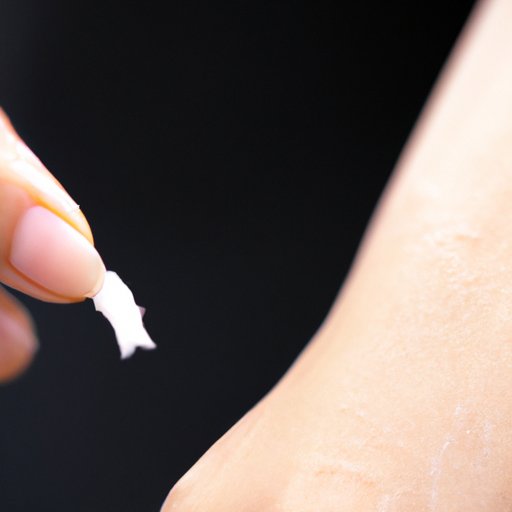
I. Introduction
Hair bumps, or ingrown hairs, can be uncomfortable, unsightly, and sometimes even painful. They occur when hair curls back or grows sideways into the skin. This can happen on various parts of the body, especially in the genital area which is prone to the condition due to its frequent grooming and sweating. This article explores the different ways to manage hair bumps on private areas, from natural remedies to professional treatments and preventive measures.
II. Understanding the causes of hair bumps
Hair bumps occur due to different reasons like ingrown hair, friction, bacterial infection, and clogged hair follicles. Ingrown hair happens when the hair grows but fails to come out of the skin, thus curling and growing back into the skin. Friction happens when tight clothing or frequent rubbing irritate the skin and cause hair to curl back. Bacterial infections can also develop in the hair follicle and cause inflammation. To prevent hair bumps from happening in the first place, you can minimize friction, avoid wearing tight clothing, use a shaving cream, and shave in the direction of hair growth.
III. Home remedies for hair bumps
There are several natural remedies you can use to treat hair bumps:
- Tea tree oil: Tea tree oil has antimicrobial and anti-inflammatory properties. Dilute a few drops with a carrier oil like coconut oil and apply to the affected area.
- Apple cider vinegar: Apple cider vinegar has an astringent effect that can reduce inflammation. Mix equal parts water and apple cider vinegar and apply to the bumps with a cotton ball.
- Exfoliating scrubs: Exfoliating scrubs help to remove dead skin cells and free up any trapped hair. Mix sugar with olive oil or coconut oil and gently scrub the area.
It’s important not to overdo the home remedies, as too much use could irritate the skin further. Use them two to three times a week and be patient as natural remedies may take some time to show results.
IV. Professional hair removal options
For those with recurrent hair bumps or severe cases, professional hair removal options are available. These include:
- Laser hair removal: Laser hair removal is a non-invasive method that uses a laser to kill hair follicles. It’s a permanent solution for hair bumps, but it can be costly.
- Waxing: Waxing pulls hair out from the root, which can help prevent hair bumps from forming. However, it can be painful and cause skin irritation or ingrown hairs.
- Electrolysis: Electrolysis inserts a tiny needle into the hair follicle and destroys it with heat or chemicals. It’s a permanent solution, but the process can be painful and time-consuming.
Consult a licensed esthetician or dermatologist for professional hair removal services.
V. Medications for hair bumps
Pharmaceutical options are available for treating hair bumps. These include:
- Topical corticosteroids: Corticosteroids can help reduce redness and inflammation, especially for severe hair bumps or infected ones. These should be used as a short-term treatment to avoid side effects.
- Antibiotics: Antibiotics can be prescribed to treat bacterial infection caused by hair bumps. However, they are not effective for all types of hair bumps.
- Retinoids: Retinoids help to unclog hair follicles by increasing cell turnover and exfoliating dead skin. They can be used to treat mild to moderate hair bumps.
These medications should be used as a last resort under the guidance of a licensed healthcare professional, as overuse or misuse can lead to side effects.
VI. Preventing hair bumps in the future
Preventing hair bumps from happening is the best approach. Here are some tips to help:
- Avoid tight clothing: Wearing loose clothes can help avoid friction and irritation on the skin.
- Use after-shave lotion post grooming: After hair removal, using an after-shave lotion or moisturizing cream can help soothe the skin and prevent ingrown hairs.
- Regularly exfoliate the area: Exfoliating the skin gently once or twice a week with a loofah or exfoliating cleanser can help unclog hair follicles and remove dead skin cells.
VII. Conclusion
Managing hair bumps on private areas can be frustrating but with the right information, it’s possible to reduce and prevent them. Home remedies like tea tree oil, apple cider vinegar, and exfoliating scrubs can be used to treat mild hair bumps, while professional treatments like laser hair removal, waxing, and electrolysis can be considered for severe cases.
Medications like corticosteroids, antibiotics, and retinoids are available, but should be used only under the guidance of a healthcare professional. Finally, preventive measures like wearing loose clothing and regularly exfoliating the area can be helpful in minimizing hair bumps.
Experiment with different methods until you find what works for you, and don’t hesitate to consult a healthcare professional if the problem persists or becomes more severe.




